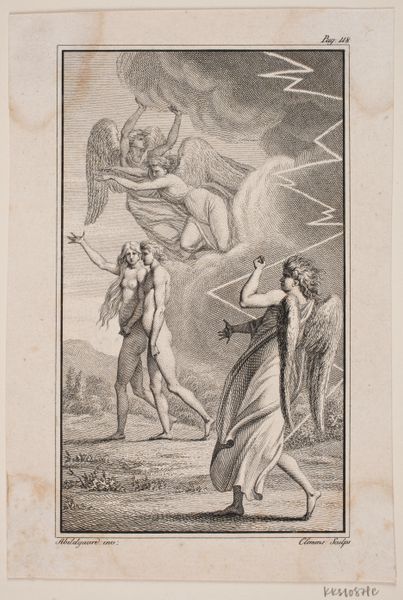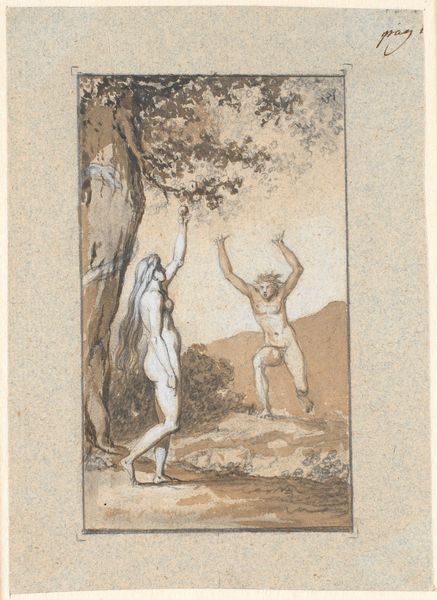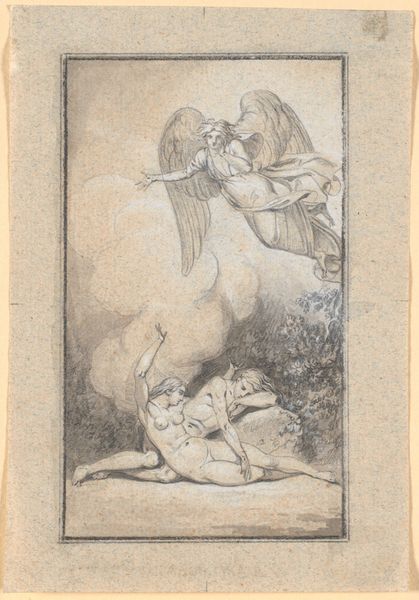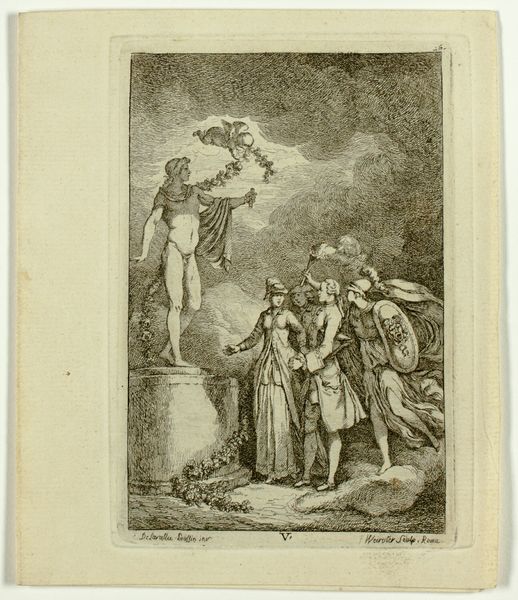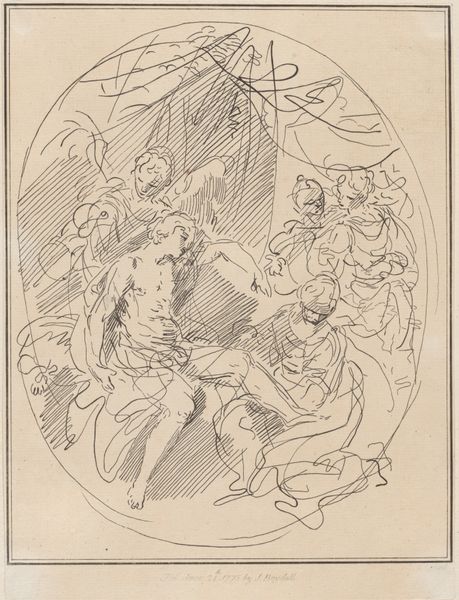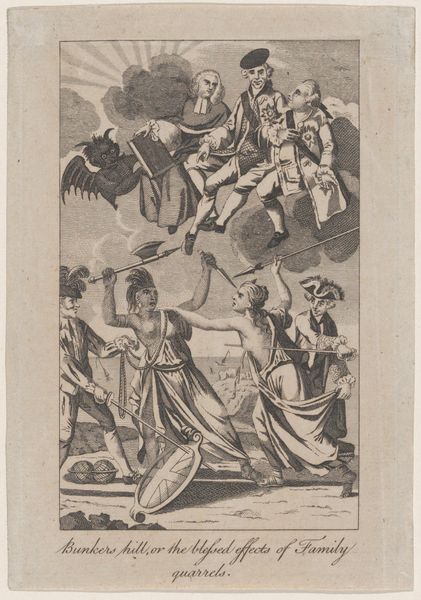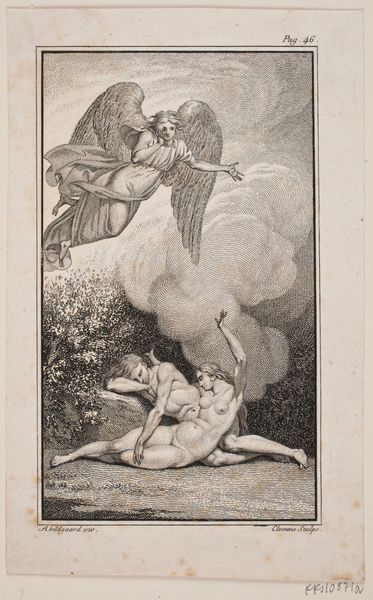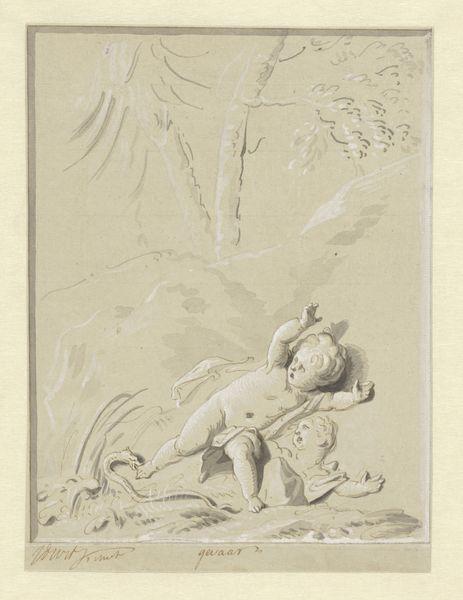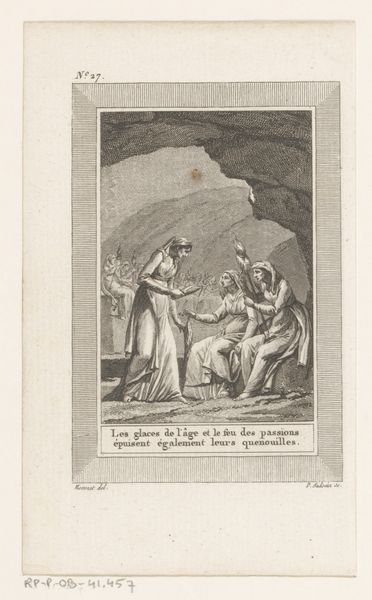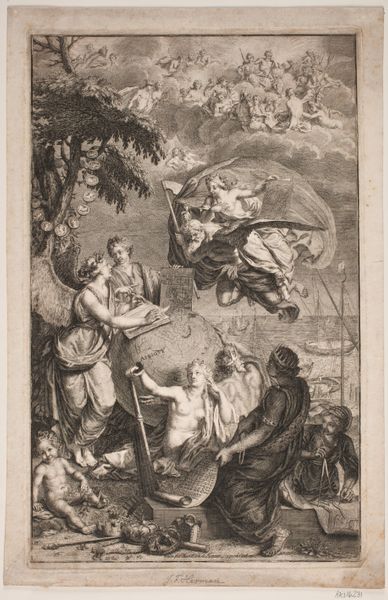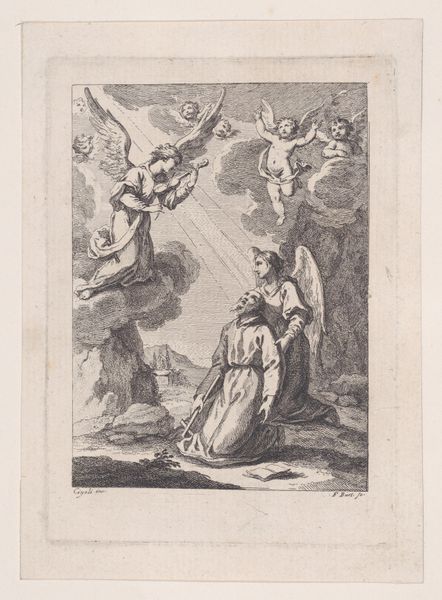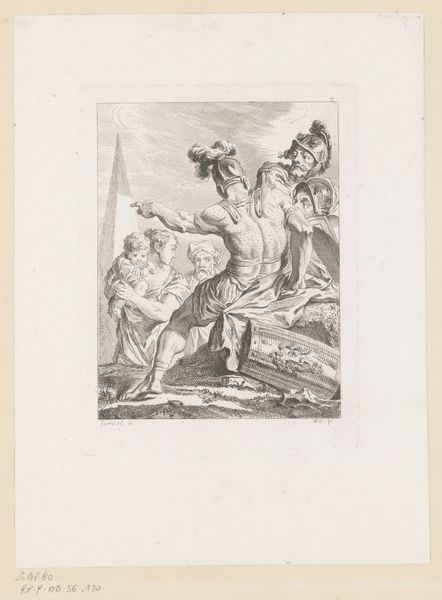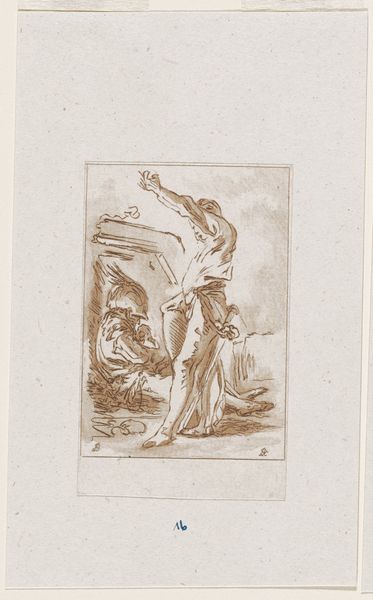
Dimensions: 131 mm (height) x 84 mm (width) (bladmaal)
Curator: Editor: Okay, so here we have Nicolai Abildgaard's "The Expulsion from Paradise," a drawing from around 1777 to 1780, made with ink, pencil, and wash on toned paper. I’m really struck by the rough, almost unfinished quality, particularly the visible sketch lines. What do you see in this piece, especially given its materials? Curator: The first thing that grabs me is precisely what you mentioned – the apparent rawness, the visible labor. It is easy to get distracted by the story of "Paradise Lost," but look at that paper: It's toned, meaning treated, likely using resources like tannin or plant dyes available to Abildgaard to alter its receptivity to the ink and pencil. This reveals choices tied to available resources, which can reflect broader artistic trends. And what about those lines? Are they confident? Hesitant? Do they show planning? Think about what the materiality implies about Abildgaard's social status, workshop, and access to specialized knowledge in the late 18th century. Editor: That's a fascinating point! So, you're suggesting that the 'unfinished' look, and even the toned paper, is a direct product of the materials accessible to him and reflects a specific historical and economic context? Does it move beyond the actual biblical scene being portrayed? Curator: Exactly! This wasn't just divinely inspired art springing from nothing. Look at the angel gesturing at Adam and Eve. Is that gesture confident or desperate? How does Abildgaard manipulate his chosen media to convey that internal tension? That’s material speaking. It forces us to consider how artworks act as tangible manifestations of a confluence of labor and materiality, a negotiation between artistic intention, available supplies and economic reality. Editor: It does reframe my thinking entirely. It goes beyond the symbolism to how he managed production to create it. I’ll definitely be researching more about materials and the production constraints within art from now on. Curator: Indeed, every material choice reflects economic factors or an innovative approach to challenge what art *can* be. Thinking materially allows for greater inclusivity and opens up fresh dialogues, seeing art's making beyond art’s symbolic interpretation.
Comments
No comments
Be the first to comment and join the conversation on the ultimate creative platform.
